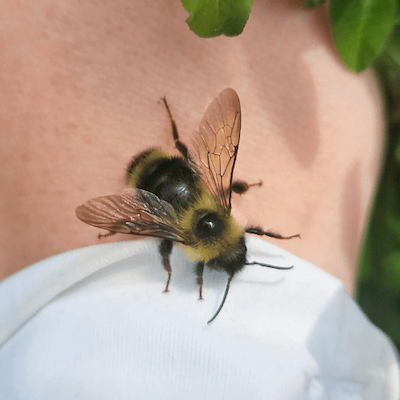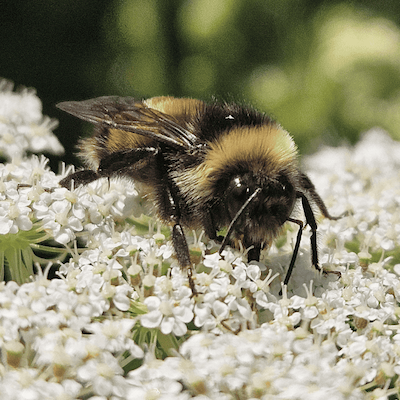Birds join the lineup too – especially the Ruby-throated Hummingbird, Ontario’s only native hummingbird species. They’re the go-to pollinators for long, tubular wildflowers like columbine and cardinal flower. And while bats don’t pollinate very much here in Ontario (our native bats are insectivores), they are pollination powerhouses in the tropics. If you’ve eaten a banana, mango, or guava lately, you have a bat to thank!
But if I had to pick one all-time MVP of pollination? It’s the bumble bees, hands down.
Bumble bees are native, adorable, and built for the job. They’re fuzzy, active in cool weather, and come equipped with a variety of tongue lengths to feed from different flowers. They’re also one of the few bees that perform buzz pollination – vibrating flowers to shake out hard-to-reach pollen – a special skill that honey bees just don’t have.
Best of all, they’re generalists. While many pollinators are picky eaters, bumble bees forage from a wide range of native plants and have evolved alongside Ontario’s flora for thousands of years. Honey bees, by contrast, are European imports – they’re useful for agriculture, but are not nearly as in tune with local ecosystems. There’s even some evidence that they can compete with sensitive bumble bee populations for limited floral resources (Wojcik et al. 2018).
So sure, honey bees put honey in our cupboards. But bumble bees keep our ecosystems blooming, and I think that’s even sweeter.








